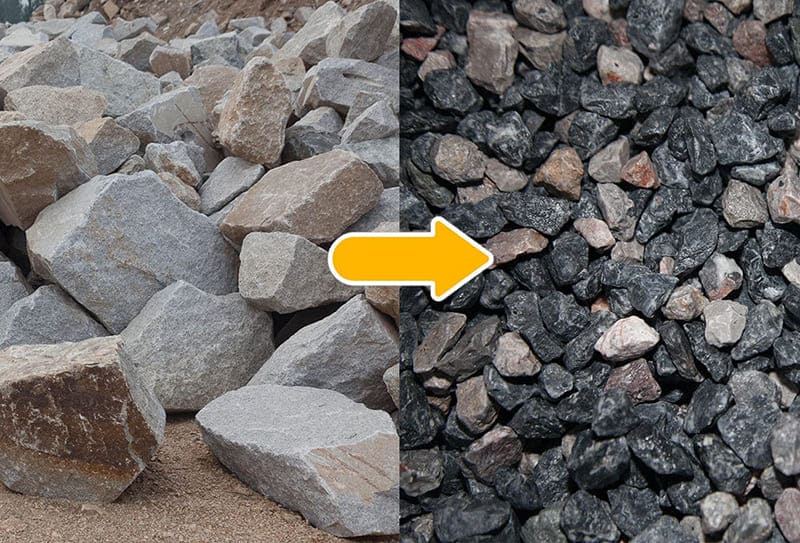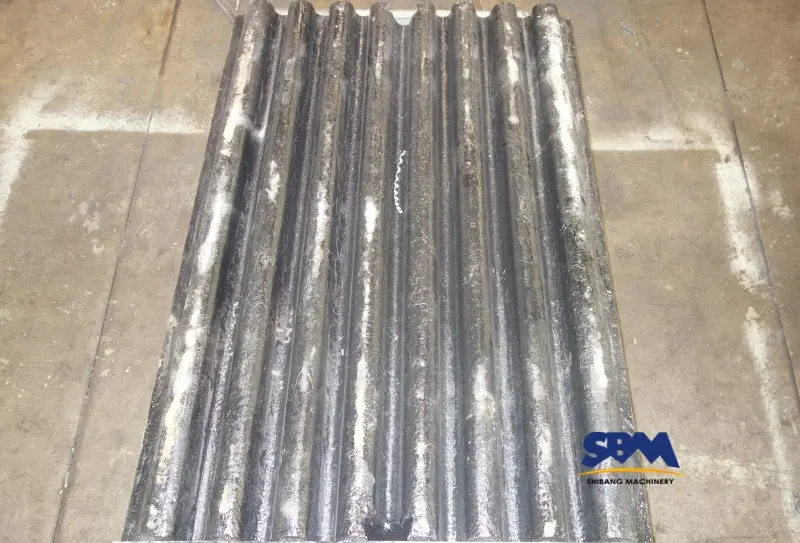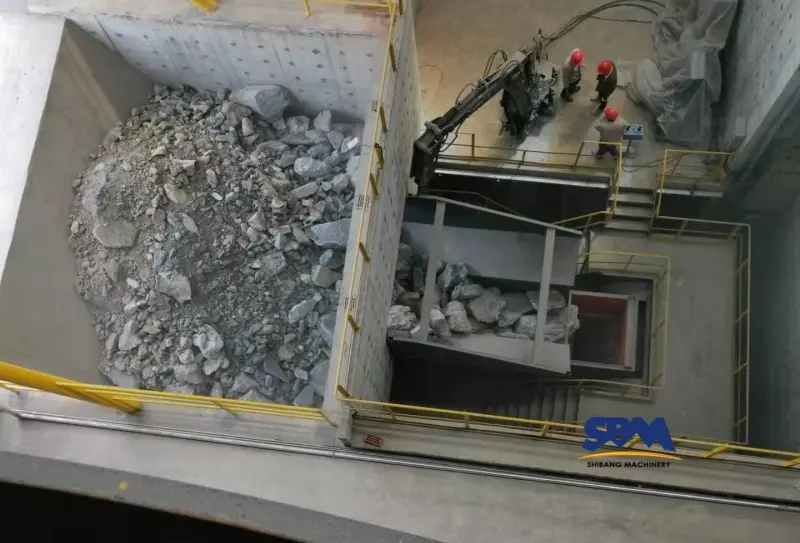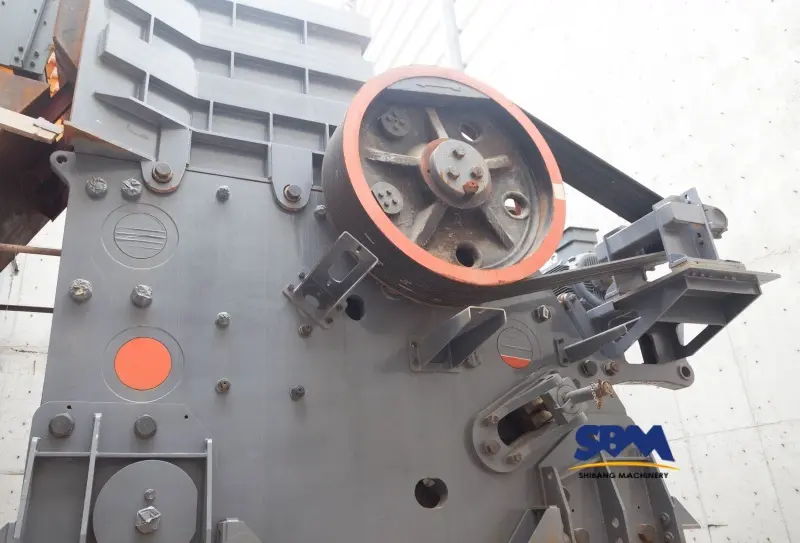بريد إلكتروني: [email protected]
كيفية سحق الصخور? تبادل المعلومات البسيط
How to crush big rocks into small ones is a simple yet complex problem. هنا, we introduce several methods of breaking rocks. Of course, which method you choose depends largely on the hardness and size of the rock you want to break.

3 methods of crushing rock
The first method: hammering
This method is more suitable for smaller stones. We place rocks on a solid surface, such as a concrete slab or a thick sheet of metal. Then we hit it hard with a hammer until it broke into smaller pieces. But it has the potential to be everywhere. نصائح: Wear goggles and work gloves to protect yourself from flying debris.
The second method: smashing with a sledgehammer
This method is more suitable for rocks with slightly larger size but soft or moderate hardness. This method requires more strength and effort than using a mechanical shredder.
The third method: mechanical crusher
This method is suitable for rocks with large size or high hardness. Some common harder rocks (الجرانيت, limestone and basalt) require a crusher, مثل a universal jaw crusher. You can also crush other different types of stone, such as natural stone, but they may require a mobile rock crusher or more powerful crushing equipment to crush.
What type of rock can a crusher crush?
The ‘hardnesses’ of stones vary, i.e., some stones are harder than others. Just consider how strong diamond is: hard rocks like granite have a stronger structure and are tougher to break up! Hard rock is excellent for construction materials since it is so robust, but when it comes to crushing, this implies that much more energy and force will be required to break them down. Sandstone and limestone are two types of soft stone that are broken more readily. No matter what kind of rock, we can use tools to crush it into different sizes of crushed rock for different purposes.
- جرانيت: A hard, dense igneous rock composed primarily of quartz, الفلسبار, and mica.
- بازلت حجر بركاني: A dark volcanic rock characterized by a fine-grained structure and high iron content.
- حجر الكلس: A sedimentary rock composed mainly of calcium carbonate. Its hardness ranges from soft and brittle to hard and durable.
- Sandstone: A sedimentary rock consisting of sand-sized grains of mineral, صخر, or organic material cemented together.
- الدولوميت: A sedimentary rock similar to limestone but containing a high percentage of magnesium carbonate.
- Quartzite: A metamorphic rock formed from sandstone under high temperature and pressure. It is very hard and durable.
- Shale: A fine-grained sedimentary rock formed of consolidated mud or clay. It tends to be brittle and crumbles easily into thin layers.
- Gneiss: A metamorphic rock with a banded or phylloid structure, usually composed of quartz, الفلسبار, and mica.
- Iron Ore: A rock containing iron minerals that can be processed to extract iron metal.
- Copper Ore: A rock containing a high concentration of copper minerals that can be extracted for the production of copper.
Here are the corresponding hardness levels for these rocks:
Rock Hardness Comparison Table
| Types of Rock | Hardness grade / صلابة موس |
| جرانيت | Hard to very hard / Mohs hardness scale ل 6 ل 7 |
| بازلت حجر بركاني | صعب / Mohs hardness of about 6 |
| حجر الكلس | Soft to medium hardness / Mohs hardness scale of 3 ل 4 |
| Sandstone | Variable hardness / Mohs hardness scale of 6 ل 7 |
| الدولوميت | Medium hardness / Mohs hardness of 3.5 ل 4 |
| Quartzite | Very hard / Mohs hardness of 7 |
| Shale | Soft to medium hardness / Mohs hardness of 2 ل 4 |
| Gneiss | Variable hardness / Mohs hardness scale of 5 ل 7 |
| Iron Ore | Variable hardness / Mohs hardness of 4 ل 7.5 or higher |
| Copper Ore | Variable hardness / Mohs hardness scale of 2.5 ل 4 |
المكتب الرئيسي
واتس اب:+8615225176731
بريد إلكتروني: [email protected]
عنوان: لا. 1688, طريق جاوك الشرقي, حي بودونغ الجديد, شنغهاي, الصين.
موقع إلكتروني: https://www.mill-sbm.com/
محتويات المادة
المشاركات الاخيرة
- ما هي أسباب الضرر في لوحة الكسارة الفك?لأنه تحت ضغط هائل أثناء معالجة المواد, هناك العديد من الأسباب لتلف لوحة الكسارة الفك. إن فهم سبب تدهورهم قبل الأوان يمكن أن يوفر التكاليف و ...
- ما هو كسارة الفك المثالية لسحق الجرانيت?تتطلب صلابة الجرانيت لا هوادة فيها الكسارة الفكية التي تم بناؤها لتحمل - التفكير الفكين المدرع والإطارات غير المتقدمة. إعطاء الأولوية للكسارات التي تجمع بين القوة الغاشمة والهندسة الدقيقة, مثل السبائك المعالجة بالحرارة وغرف التكسير التكيفي ...
- كسارة الفك لمعالجة الحجر الجيري: دليل للكفاءةحيث يستخدم الحجر الجيري على نطاق واسع في البناء والصناعة, تتطلب معالجتها كسارة الفك القوية والمتينة لتلبية احتياجات الصناعة. بين العديد من الكسارات, الفك ...



